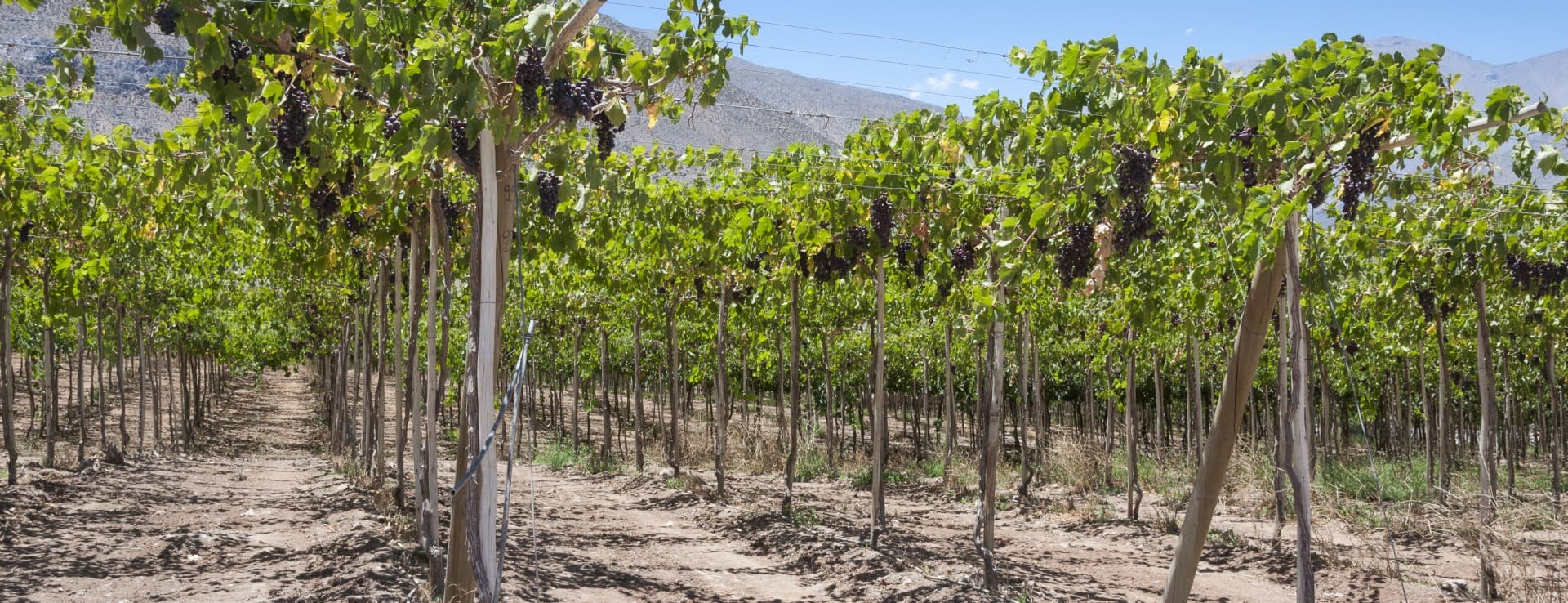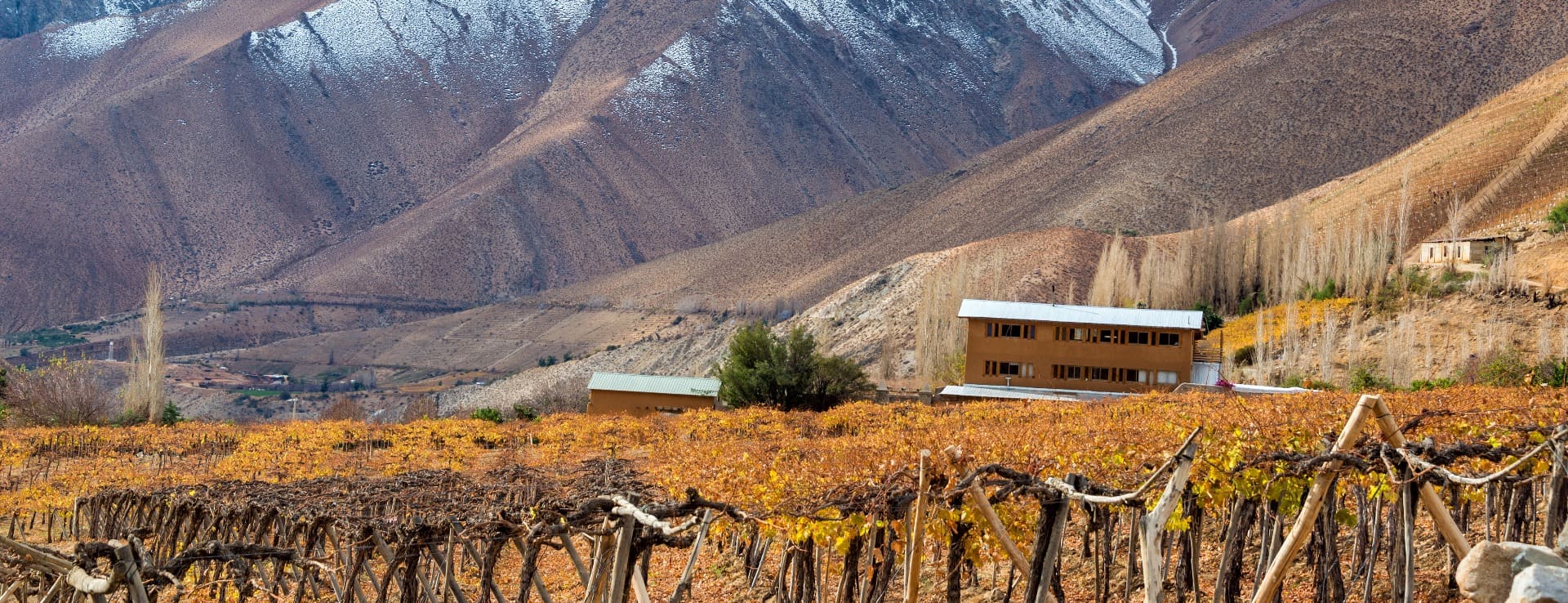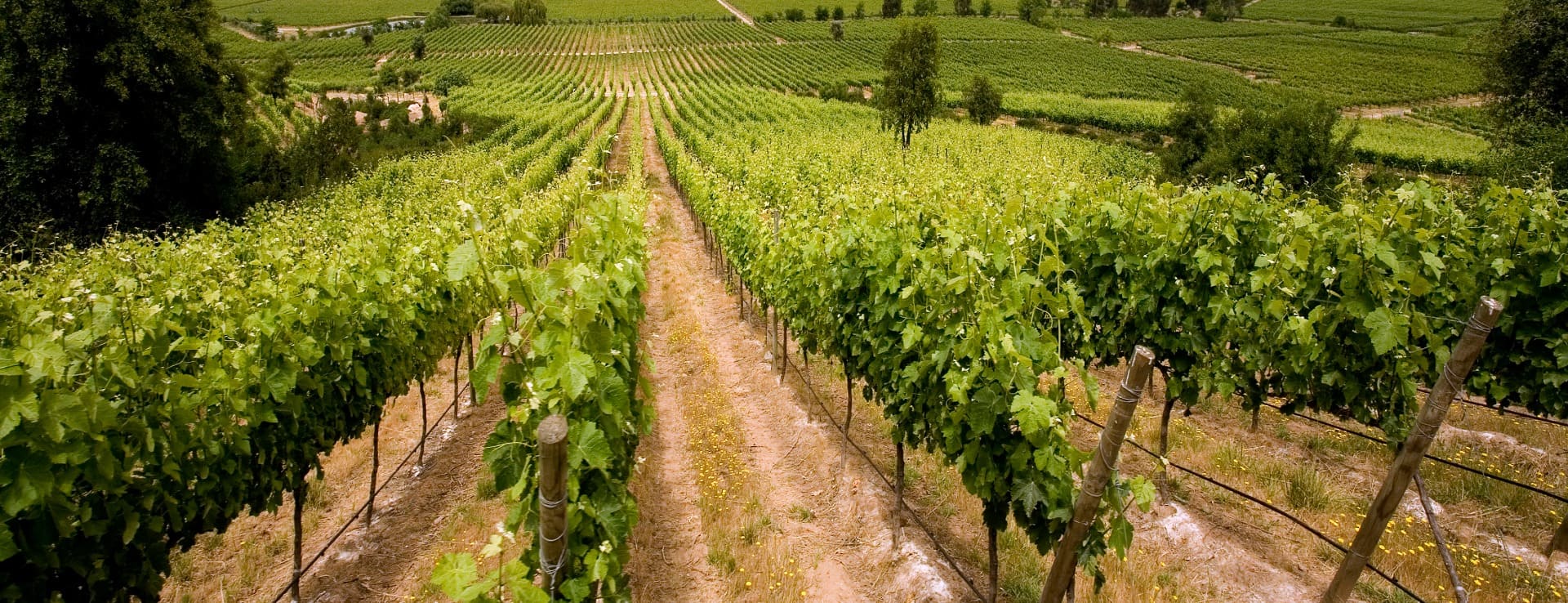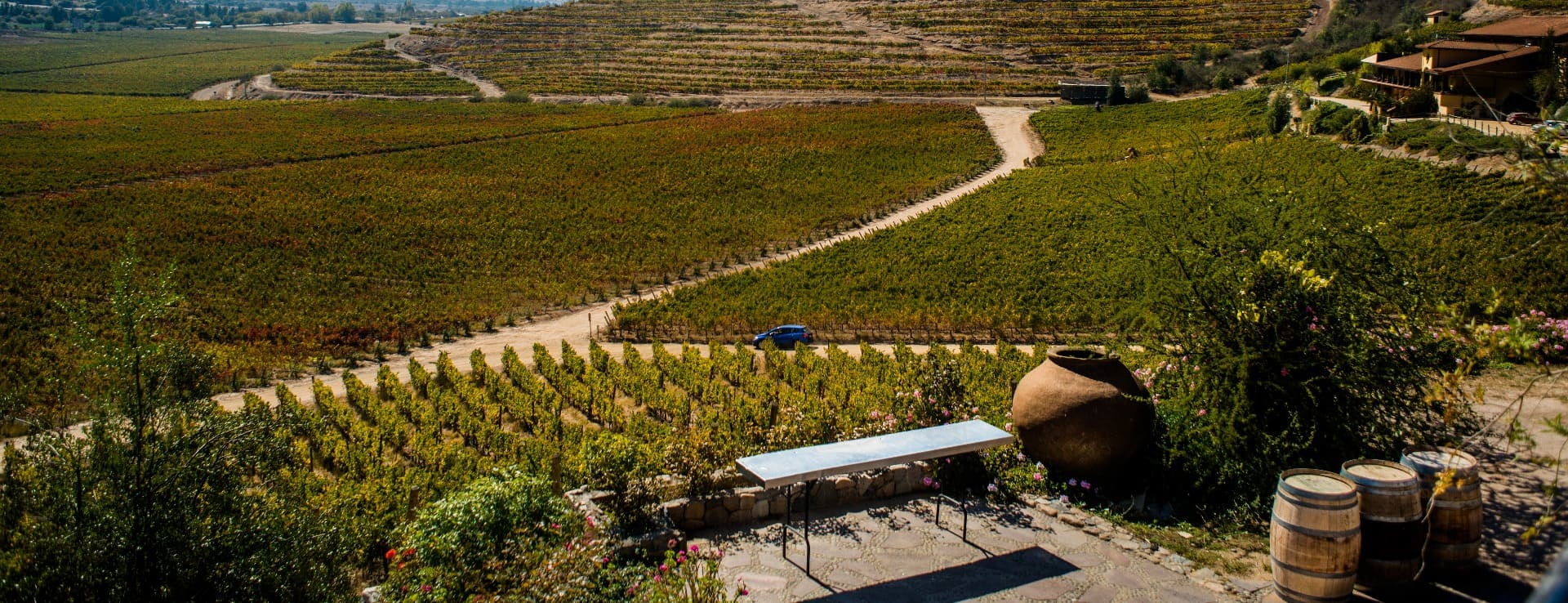Find your winery or vineyard
Infographic of the Denomination of Origin
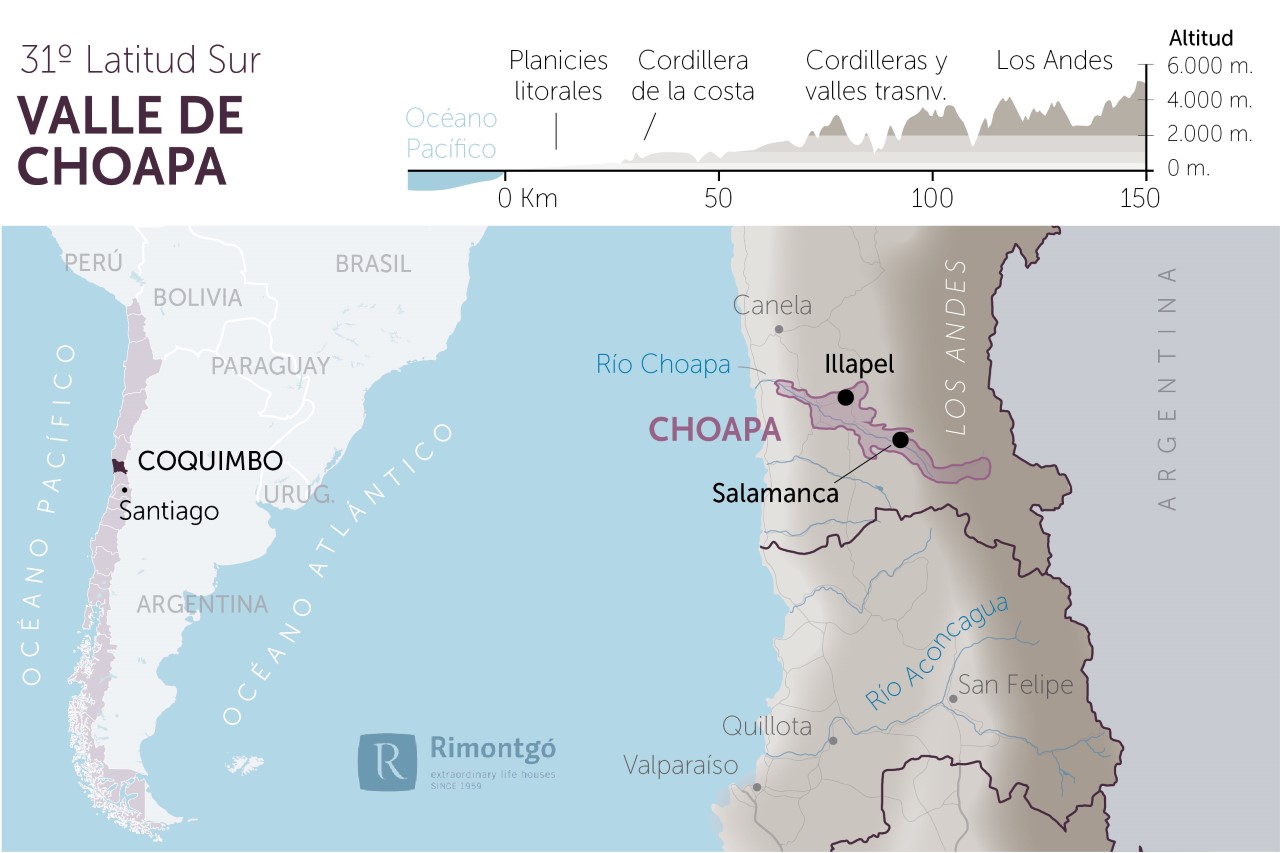
Change to imperial units (ft2, ac, °F)Change to international units (m2, h, °C)
Total surface area:
1.632 ha4.033 ac
Altitude of the vineyards:
Min: 400m
Max: 600m
Min: 1.312ft
Max: 1.969ft
Temperature:
Min: 6º
Max: 25º
Min: 43°F
Max: 77°F
Yearly rainfall:
100 l/m29 l/ft2
Designation of Origin Valle de Choapa
LOCATION AND HISTORY
The designation of origin Valle de Choapa is one of the three, together with Valle del Elqui and Valle de Limarí, within the Chilean region of Choquimbo, specifically in the southern area. Valle de Choapa completely covers the homonym province located to the north of Chile.
It is the tightest valley of this Chilean region and currently has, with more than 1,600 ha of vineyards, of which the 90% are dedicated to the pisco production, Chilean national beverage. About 140 ha are dedicated to the production of other beverages.
SOILS
The sediments of the Choapa River, among which we find slime, sand and gravel, have given rise in the Choapa Valley to a colluvial-fluvial type of soil, suitable for the cultivation of vines and some fruit trees. As a result of the soil and climate factors, it is possible to obtain a grape of considerable acidity and sweetness, with fruity aromas and mineral touches.
CLIMATE
The climate present in the Coquimbo region corresponds to that of the steppe, although we can distinguish sub-climates or microclimates depending on the different geographies of the region. On the one hand, in the Andes we will find a cold mountain steppe climate, characterized by extreme dryness. The semiarid climate is present in the interior of the region. The steppe begins in the coast of the region of Coquimbo, where the temperatures can be qualified as moderate due to the presence of the Pacific and its breezes. that penetrate in the interior of the region. The coastal mist, called "camanchaca" by the inhabitants of Coquimbo, appears very frequently in the lands of the Chilean Coast Range.
The Designation of Origin Valle de Choapa enjoys an arid steppe climate, characterized by the absence of cloudiness and high dryness, although in winter rainfall is common. The average temperature in the months of January-February is 9º while in the hottest months (July and August) it rises between 25º and 30º. Therefore, the climate of the Choapa Valley can be considered cold, dry and with an abundance of light, with rainfall reaching an average of 250 ml per year.
TYPE OF GRAPE
The climate and soil of the Choapa Valley are factors that help the cultivation of grapes such as different varieties of Muscat, Pedro Ximénez, Cabernet Sauvignon or Cabernet Franc. To the inland of the valley and within proximity to the mountains, vines of Syrah are found.
Discover more wineries and vineyards for sale in these wine regions in Chile
Subscribe to our mailing list to receive news about wineries and vineyards.

